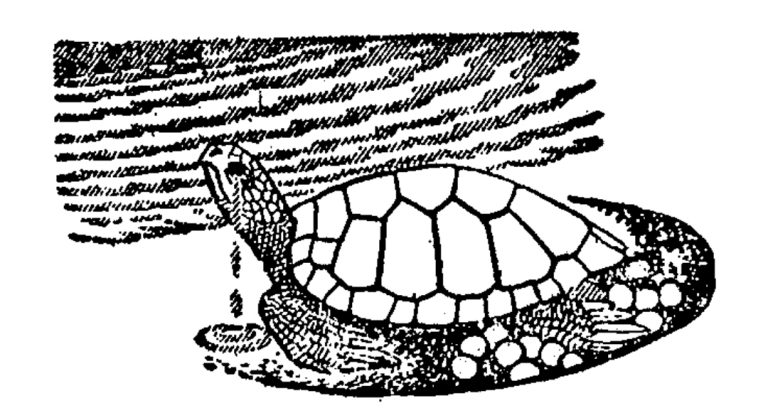Although sea turtles live in the sea, they often come ashore, especially during the nesting season in June and July. They come ashore at night, using their hind limbs to dig holes in the sand where they lay around sixty to seventy eggs before covering them with fine sand. Strangely, when laying eggs, they continuously shed tears from their eyes. Some people believe this is due to the pain of egg-laying, while others think it’s to prevent their eyes from drying out and keep sand out. The exact purpose of their tears remains a mystery in animal biology.
Animals like sea turtles feed on shrimp, crabs, fish, and seaweed in the sea, and seawater is their only source of drinking water. The salt concentration in seawater is about 3%, much higher than in any animal’s bodily fluids and blood. Where do they excrete the salt they consume? In 1959, Danish zoologist Knud Schmidt-Nielsen conducted experiments similar to those on seabirds with reptiles like sea turtles, crocodiles, sea snakes, and monitor lizards. By infusing sea water equivalent to half their body weight into sea turtles through a tube inserted into their esophagus, he found that over 90% of the absorbed salt was excreted through their tears. The salt glands behind their eyes excrete excess salt absorbed into their bodies, and the tears secreted serve as a means of excreting excess salt. Schmidt-Nielsen named this excretory organ the “salt gland,” similar to those found in seabirds. Because of these salt glands, sea turtles can consume salty marine animals, plants, and seawater for hydration. In the Galapagos Islands in the western Pacific, there is a species of giant lizards that feed exclusively on seaweed, which contains a significant amount of salt. Schmidt-Nielsen conducted experiments on them as well and found that they excrete saltwater with a higher salt concentration through their nostrils. He also discovered that the salt-excreting organ is located in front of their eye sockets, not in their kidneys, with its opening inside their nasal cavity. Therefore, monitor lizards, like sea turtles, can consume salt-rich seaweed and seawater.
However, there are marine mammals like whales, dolphins, and seals that live in the ocean. How do they excrete salt? These large-bodied animals consume several tons of food with significant salt content during each feeding, but autopsies and tests have shown that the salt content in their blood and urine is minimal. How they dilute or excrete the concentrated salt absorbed into their bodies remains a mystery awaiting further research and discovery by zoologists.

